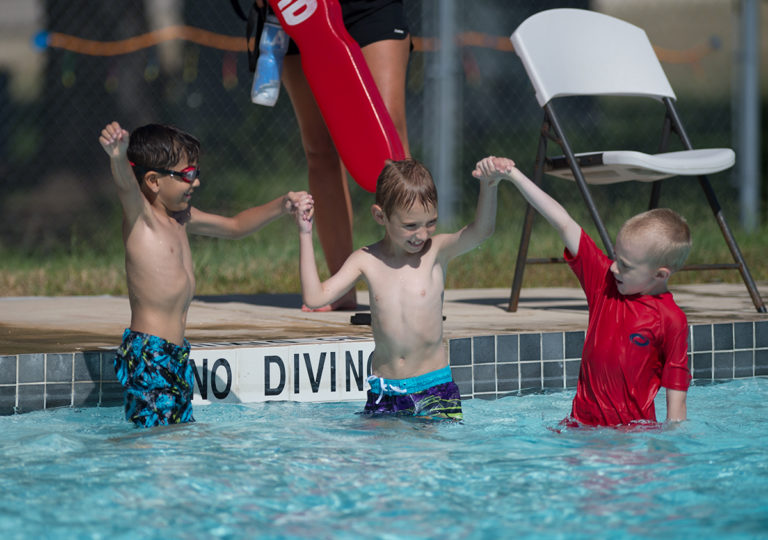Buddy check! The importance of getting a friend wherever you go

In a crowded pool full of raucous boys splashing and swimming, the justification for frequent buddy checks appears self-evident.
But do Scouts really need to get a friend for a quick trip to the latrine or when they meet with a merit badge counselor?
Simply put, yes.
Scouting’s buddy system calls for Scouts to pair up with a friend or two for all activities. This helps ensure safety and accountability, and teaches Scouts to have responsibility for others.
The basics
Looking out for one another anywhere and everywhere is the keystone to the buddy system. Just because you’re in a populous place doesn’t mean you can’t get overlooked by those around you. Watch a few videos on this YouTube page of rescues at a South Carolina wave pool, and you’ll soon notice that many times the lifeguards — and not the swimmers just a few feet away — are the first ones to realize something is wrong.
Buddies are there to watch you when others may not. They should stay nearby to monitor you, alerting a safety team if help is needed.
Adults are not exempt from any these safety measures. Scouters should have buddies during all Scouting activities, too.
Buddy system rules:
- The buddy system should be used at all times, not just for aquatics. Horseback riding, cycling, canvassing the neighborhood during a fundraiser…you name it, you need a buddy.
- Buddies should know and be comfortable with each other. No youth should be forced into or made to feel uncomfortable by a buddy assignment.
- It is strongly encouraged to pair Scouts of similar abilities, ages and maturity. Self-selection with no more than two years age or significant differences in maturity is recommended.
- A buddy team may consist of three Scouts when necessary, like an odd number in a group.
On the water:
- Buddies should check into and out of an area together. They should stay in the same assigned area, too.
- If two buddies are of differing swimming abilities, they should remain in the assigned area of the buddy’s lesser ability level.
- About every 10 minutes, a buddy check should be conducted by the lookout. The lookout gives a signal and calls for “Buddies.” Buddies are expected to raise each other’s hand by the time the lookout counts to 10. Lookouts count the paired swimmers before swimming resumes.
- Scouts on a float trip need to have buddies as well, and each boat should have a “buddy boat.”
On the trail:
- While hiking or camping in the backcountry, Scouts should travel in groups of at least four. That way, if one gets injured, a buddy can stay with him, while the other two seek help.
At meetings:
- When meeting with a merit badge counselor, Scouts must have a fellow Scout, sibling, parent, relative or friend with them.
- A buddy isn’t necessary for a Scoutmaster conference, but the meeting should be visible and accessible by others.
What about girls?
When girls join Cub and Boy Scouting programs, the Venturing program has a rule the other programs will follow. Buddies should be the same gender, or in groups of three in mixed company. No boy-girl buddy pairs.
Buddy check! The importance of getting a friend wherever you go
